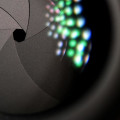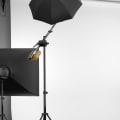Photography is an art form that goes beyond simply taking a picture - it requires a keen eye, attention to detail, and understanding of the technical aspects of the craft. From selecting the right lens for the job, to manipulating light and composition, mastering the technical aspects of photography is essential for any photographer looking to take their work to the next level. In this article, we will explore the different technical aspects of photography, including the right equipment, lighting techniques, and composition tips that will help you create stunning photographs.
Composition
Composition is also an important technical aspect of photography. It encompasses the way in which the elements of a scene are arranged in order to create a pleasing and effective image.This includes understanding framing, leading lines, rule of thirds and other principles of design. Knowing how to compose a scene can have a huge impact on the overall look and feel of a photo. Framing involves using elements in the environment around your subject to draw the eye to the focus of your image. Leading lines are lines that lead the viewer's eye into the frame, creating a sense of depth. The rule of thirds is a visual guideline that divides the frame into nine equal parts, with four intersecting points.
It can be used to help compose interesting, balanced shots. Using these techniques will help you create more dynamic and visually pleasing images. Remember to take your time and look for interesting ways to compose your scene. Experiment with different angles and perspectives, and find ways to use the environment around you to help create an engaging image.
Post-Processing
Post-processing is an essential part of any photographer's workflow. Editing photos in programs such as Adobe Lightroom and Adobe Photoshop allows you to take your photography to the next level.Through post-processing, you can make adjustments to the exposure, contrast, color, sharpness, and other settings in order to get the most out of your images. When post-processing, it is important to understand how each setting affects the overall image. For example, adjusting the exposure may make the colors in the photo appear more vibrant and vivid. On the other hand, adjusting the sharpness may make certain details of the image stand out more clearly. Knowing how to use each of these settings is an important part of mastering digital photography. Post-processing also allows you to add effects and filters to your photos.
This can help you create a unique style and make your photos stand out from the crowd. With the right post-processing techniques, you can create stunning images that capture the moment perfectly.
Understanding Camera Settings
One of the most important technical aspects of photography is understanding the camera settings. This includes understanding shutter speed, aperture, ISO, white balance and more. Knowing how to use these settings is key to capturing the perfect shot. Shutter speed is the length of time the shutter stays open when you take a photo.A fast shutter speed will freeze motion, while a slow shutter speed will create motion blur. Aperture is the size of the opening in the lens, which affects the amount of light that enters the camera. The larger the aperture, the more light that can come in. ISO measures the sensitivity of your camera's sensor to light and can be adjusted based on lighting conditions.
Finally, white balance is used to adjust the color temperature of photos, allowing you to achieve accurate colors in all types of lighting. All of these settings are essential for creating great photos, so it's important to understand how they work and how they affect your shots. Experimenting with different settings can help you find the best way to capture a particular moment.
Exposure
Exposure is another important technical aspect of photography. Understanding and properly utilizing the exposure triangle - made up of shutter speed, aperture and ISO - is essential for getting the desired brightness for your photo. Shutter speed indicates how long the camera shutter is open for and how much light is let in to hit the sensor.Aperture is the size of the opening in the lens, which affects how much light is let in and how much of the scene is in focus. ISO, on the other hand, adjusts the camera’s sensitivity to light. All three of these elements can be adjusted together to get the perfect exposure for your photo. It’s important to remember that different lighting conditions require different exposure settings. For example, if you’re taking a photo indoors with artificial lighting, you may need to adjust your settings to avoid a too bright or too dark photo.
Experimenting with different combinations of the exposure triangle will help you get the best results and find the settings that work best for your photography. The key to mastering exposure is practice. Try out different settings and take notes of what works and what doesn’t. With time, you’ll get a better understanding of how to control the exposure triangle and get the desired brightness for your photos.
Lens Choices
When it comes to lens choice for photography, there are a few main options to consider. Wide-angle lenses are typically used for landscapes, allowing you to capture a large area in one shot.Telephoto lenses are great for capturing distant subjects, and can help you achieve a shallow depth of field. Macro lenses are great for capturing small objects up close, and giving you a great level of detail. Lastly, prime lenses offer the best image quality, but are limited in the types of shots they are capable of. Wide angle lenses are great for capturing sweeping landscapes, as they allow you to fit more of the scene into the frame. When using a wide angle lens, it’s important to keep in mind that the edges of the frame will be distorted, so be sure to keep your horizon line level.
When using a telephoto lens, it’s important to use a tripod or other stable support, as camera shake can be amplified at longer focal lengths. Macro lenses are perfect for capturing small objects up close and getting incredible levels of detail. These lenses are also ideal for shooting close-up shots of nature and wildlife. When using a macro lens, it’s important to use a tripod or other form of stabilization to prevent camera shake from ruining your images. Prime lenses offer the best image quality as they don’t have any optical elements that can degrade the image. However, prime lenses are limited in the types of shots they can take since they don’t zoom in and out like zoom lenses do.
Prime lenses also tend to be more expensive than zoom lenses. Photography is an art form that involves both creative and technical aspects. Understanding the technical aspects of photography can help you take your photography to the next level. By understanding camera settings, lens choices, exposure, composition, and post-processing, you will be able to create stunning photographs and elevate your work to a new level. Whether you are a beginner or a professional photographer, the technical aspects of photography are essential to getting the best results from your camera and lenses. With a bit of practice, you will soon be able to confidently adjust your camera settings, choose the right lens for the job, adjust exposure settings, and apply post-processing techniques to get the most out of your photographs.







